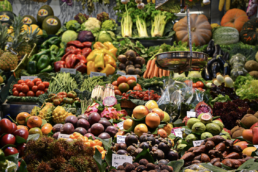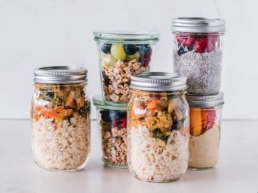By Sandra Huskey, First Mile Care DPP Coach
When you hear “hydration” you immediately think “water,” right? Your body is about 60% to 70% water. Water aids digestion, keeps your blood moving, helps your kidneys and bowels work, provides saliva, and regulates body temperature, among other critical functions. It energizes your muscles and joints and reduces fine lines in your face. It wards away headaches and fatigue and keeps you alert. It also helps you to control calorie intake and your weight, because water helps to fill you up.
But hydration goes beyond just drinking water. If you eat fruits and vegetables that are full of water, they make you feel fuller for longer. As part of the ongoing series of “Diabetes Prevention in Action” webinars offered by First Mile Care, I shared my tips for making hydration fun and looked at how to jazz up your water intake and make healthy smoothies.
In the clinically-proven National Diabetes Prevention Program (DPP), coaches emphasize that you need to be mindful of everything that goes into your body — and that includes all liquids. First Mile Care DPP coaches recommend that you keep a food journal to track your intake. We teach DPP participants to read food and nutrition labels carefully as the ingredients of what you eat and drink go towards your calorie, carbohydrate, sugar, fiber and other nutrient counts.
Water, water, everywhere
How much water should you drink? That varies based on your body size and how much you’re exercising and perspiring. In the summer months in Texas where I live, you’re going to want to increase your hydration to a bare minimum of 64 ounces if you’re exercising, but you could aim for 80 ounces. My tip is to keep full glasses of water around the house, or for some folks, it’s drinking from big containers where they can easily measure their intake.
The important thing about water is to know your sources and look at the labels, as all water is not created equal. Here are a few things to keep in mind.
- Tap water. Check what minerals your municipality adds to it.
- Mineral water. It varies by the source, and naturally has different nutrients in it.
- Bottled water. Some may come from a particular spring, but some come from a water municipality, and even “purified” water may have calcium, chloride, magnesium salts and other additives.
- Sparkling water. The added carbon dioxide gives it the bubbles. Most sparkling waters like Lacroix are flavored, so check the label for the additives.
- Club soda or seltzer water. The bartender’s favorite, probably because it has a bit of saltiness, although it’s basically just like sparkling water.
- Tonic water. Consider it a soda drink and not a water, as it has a lot of added sugar and sodium as well as quinine, which can increase heart rhythm.
- Sports drinks. Check the additives, as Gatorade, for example, has a lot of added sugar.
You’ll be more inclined to increase your water consumption if it has a pleasant taste. Luckily, it’s easier to turn boring water into a flavored beverage than for Cinderella to turn into a princess. Consider infusing a jug or glass of water with herbs like basil or mint, or lemon or lime quarters, or cucumber slices.
Satisfying smoothies
You can jazz up your water, but sometimes you want something a little more satisfying. For example, I drink smoothies as a snack or to replace electrolytes and lost fluids after a run or other physical activity. And it’s easy to make your own delicious, healthy smoothies! Here are a few of my basic ingredients.
- Base: plain yogurt, coconut water, low-fat milk, almond milk, oat milk, soy milk
- Protein: peanut butter, almond butter, cashew butter, pistachio butter
- Fiber: flaxseed, flax meal, chia seed or even veggies such as spinach
- Consistency: banana (it has sugar), or a healthy fat like avocado or sweet potato (but remember they are still fats!)
- Flavor: cinnamon, unsweetened cocoa, ginger, turmeric, vanilla
- Sweetener: go natural with honey or fruit like blueberries, which are lower in sugar than dates
If you’re just starting out with homemade smoothies, you might want to limit yourself to only a few key ingredients. For example, yogurt, coconut water, peanut butter, and one flavoring.
The good thing about homemade smoothies versus purchased ones is that every ingredient is under your control. Anything you put in it will go towards your nutritional and calorie counts, so always check the labels for the amounts of sugar, sodium, protein and fiber. For example, coconut water has sugar, but it’s natural sugar and the calories are lower than in other drinks. Almond Breeze milk is unsweetened so has no sugar. Yogurt with fruit is higher in sugar and calories, which is why I recommend plain yogurt so you can add your own flavors and better track your nutritional intake.
Watch my webinar video below to learn more of my tips for making hydration fun!
To learn more about how you can benefit from the First Mile Care Diabetes Prevention Program, take the prediabetes risk test and get started today!




